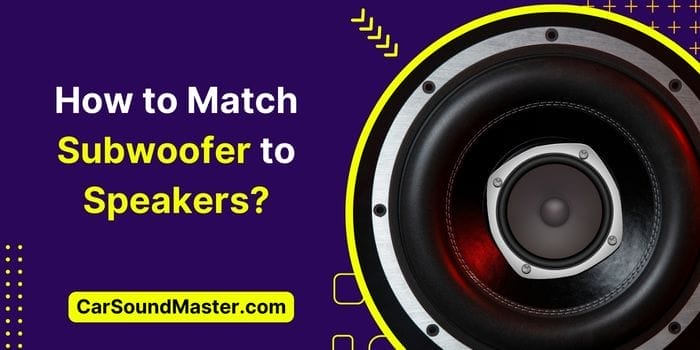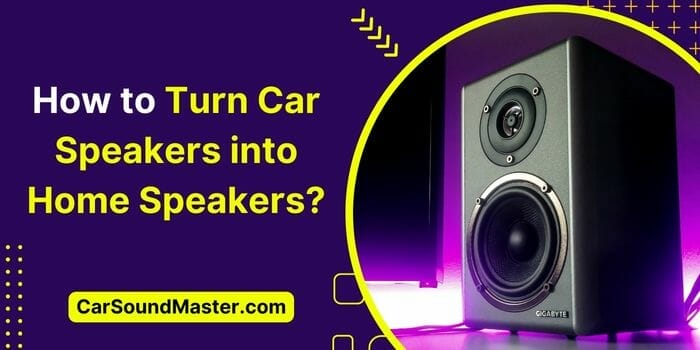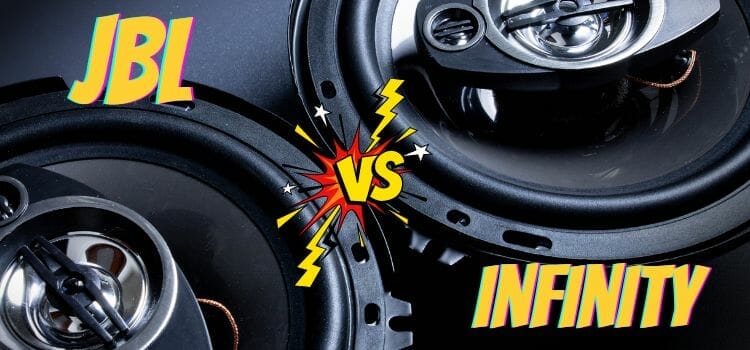How to Match Subwoofer to Speakers? 2024 Latest Guide
Just that you’ve spent a bounty and got a premium subwoofer from the market is no way any assurance that you’ll play out with a superbly bass-banged surround sound.
Subwoofers are not that simple plug-n-play type of speakers; they are way too complicated to tune up with other drivers, your room’s or car cabin’s acoustics, etc.
For that reason, topics like how to match subwoofer to speakers or how to best calibrate subs with the rest of the system, etc., are hands down the hottest discussions in the zealot audiophile community.
Well, though, more of all such things are covered in detail down the road, matching subwoofer to speakers to make for a perfect listening experience is still not rocket science.
It’s just that the subwoofer and speakers should be the closest in sizes (diameter-wise, of course); the crossovers of the system should be optimally set and tuned (esp. that of the sub); speakers and sub perfectly phase-aligned.
And that’s it – that’s how you need to match the subwoofer to other speakers in your music nirvana.
This guide below is gonna teach you how to practically do all those things. Stay put and read along.
Why Does Subwoofer Need to Match Speakers?
Subwoofers, as you may know, are specifically engineered drivers that flaunt bigger surface areas to move more air, and thus produce frequencies from the lowest region of the audible spectrum.
Their low-pitched notes, also called bass (usually ranging between 20 to 200Hz), are more often the fillers providing depth and richness to music soundstages and also the first to be noticed for their presence or absence.
Unlike other speakers where, generally, both mids and trebles are covered, a sub catches up with the staging from a completely different angle. So they should seamlessly blend with others and not fade out or entirely draw attention to bass alone.
After all, the overall pleasant rapport of your surround sound setup owes to a squared-off tonal balance, a gentle overlap, and a smooth transition between frequencies; all of that ultimately translates into a more realistic, definite, 3D-like soundstage.
How to Match Subwoofer to Speakers?
There may be so many different approaches for this based on the individual understanding of a perfect surround sound setup.
However, the best out there for me is first factoring in all the elementary dos and don’ts, doing them, and finally setting up the setup.
Factors to Consider While Matching Subwoofer to Speakers
Though there are no hard and fast rules, contemplating a few things before getting a sub for your surround setup may help you with an essentially great mix and match.
#1. Speaker and Sub’s Size
Like speakers, of both cars and HT setups, subs also come in various sizes ranging from as small as 3 or 4” to as big as 18” or perhaps more. But it’s not always “the bigger the better” that works well.
You should ideally get a sub equal to or slightly bigger than the size of your other speakers. The idea is simply not to under or overwhelm any specific frequency spectrum. Much bigger subs will absolutely crush the performance of other speakers; much smaller ones will themselves fade out.
For example, for automobile setups, an 8” sub would do enough if the main speakers are those typical circa 6” or so. Whereas, for DJ setups or HTs, a 12” sub for 8 to 10” tops, a 15” for say 12” speakers, and the mighty 18” sub for other colossal mains is an absolute beast-mode match.
#2. Use Case and Sound Type Preferences
While deciding on a subwoofer, it’s better to have your needs and use case scenarios figured out beforehand.
Some subs are particularly designed for cinematic excellence with tailor-made deep rumbles and booming thunders.
Whereas, some are dedicated to music purposes only producing accurate and emphatic bass and exceptional bassline distinctions.
#3. Power, Sensitivity, and SPL Gauge
Balancing the watts of speakers and subs is also an essential step to make for a perfect sub-n-speaker match-up. See, a sub with higher watts reading than other speakers would quite sip more juice and dampen the mains; a lower wattage would do it altogether opposite.
Though watts don’t directly translate into output quality (2x the energy only results in a 3 dB difference), the focus necessarily is more on the SPL pegs.
This means you should always try to get speakers and subs with almost similar or nearest power ratings and from within the same price range, maybe. It’s like if one of either the speakers or sub is a premium product, whereas the other is just a mid-range or low-tiered, the former will effortlessly inundate the latter.
For example, if speakers from a brand’s budget or mid-range lineup output at around 115 to 118 dB, the premium sub from the same brand would throw a thunderous 128, 130 dB. And 10 dB of difference means double (2x) the volume.
Vice versa, perhaps even worse, should be the case if you go with premium speakers but a mid-tier sub. So the thing is, for an unparalleled listening experience, the SPLs need to be within a similar playing field.
#4. Impedance
Resistance to current is another key factor while doing such mix and match. Both the speakers and sub(s) should ideally flaunt similar impedance ratings to avoid any disruptions in the current drawing schema.
#5. Should Speakers and Sub(s) be from the Same Brand?
Brand synergy might yield exceptional results, most of the time, though it’s not such a standard requirement.
One reason why speakers and sub(s) from the same brand would do good is, as already discussed, because finding them from within the same SPL and SQ ballparks might be easier within one brand than strolling around in the market.
Apart from that, speaker brands also flaunt a unique sound signature, whereas some may also feature inbuilt settings into their speakers and sub’s DSPs for seamless integration.
So all in all, it’s good if you could do the brand-matching, but it’s not mandatory unless your speakers and subs are complementing each other well in all the other key specs.
Matching Subwoofer to Speakers – The Practical How-to Process
After you’re done with all the preliminary arrangements, here are the steps you need to go through to be up and running with your unprecedented setup.
#1. Calibrate Your Subwoofer’s Crossover
Tuning your crossovers’ frequencies is an essential part of integrating your entire audio system. It helps with seamlessly blending the different frequency ranges coming off all the multiple drivers making for a cohesive music playback.
Crossovers are devices that split the incoming audio signals and dictate different frequencies toward the drivers specifically designed for them. Because for a subwoofer, the ideal frequency response is between 20Hz to max. 200Hz, you should essentially set your sub’s crossover’s starting point at 20Hz and limit it to around 150 to 200Hz.
This means the subwoofer won’t play frequencies of over 150Hz, and other speakers from your sound studio won’t play those below 150Hz (the bass) and leave them to the master at work. So the sub won’t sound booming or hollow but punchy and emphatic.
Also, setting the sub’s crossover at slightly above the mains’ frequency drop-off points helps in a delicate blending of sound notes from the entire audible spectrum.
#2. Phase-Align Subwoofer(s) to the Speakers
For a single subwoofer, there is no need to tweak the phase alignment, and it should ideally be set to zero. But in case of two or multiple subs, you should phase-match them for a truly riveting music experience.
Matching the phase simply means that if your other speakers are beating outward on a bass transient point, your subwoofer should also do the same and in the exact same direction.
To phase align the sub to speakers, sit equidistant from your speakers and sub and start rotating the latter’s phase control knob clockwise to notice the bass dropping off greatly, then rising again. Now, simply set the knob to where the bass has the least amplitude.
If the subs are placed to each other’s back, set one’s switch at the 0-degree and continuously move the other sub’s phase towards the 180-degree region until you’re at a point where there is no noticeable variation and both the subs sound exactly identical.
#3. Tweak and Match the Volume Levels
Volume matching the sub and speakers simply means that none of the two would override each other.
Again, sit equidistant from both of them, start adjusting the sub’s level control, and notice the tonal transition from mains to sub, and all the way back. Then set the sub’s control at where both the speakers and sub seem to have similar amplitude.
The easiest method to do this is by closing your eyes, playing a tune, and continuously atoning the sub’s level control until your brain starts failing to sense the difference between the sound notes from all the different regions of the audible range.
Closing
A well-matched set of subs and speakers can offer a professional, studio-grade listening experience – no matter whether it’s in a car or a home theater.
So if you’ve been planning on buying and adding a subwoofer to your existing audio artillery, I hope this guide has answered all your queries revolving around “how to match subwoofer to speakers” – for car or home theater – both.
It’s just a whole lot of few simple things to factor in, and the end result is going to be – quality altogether.







